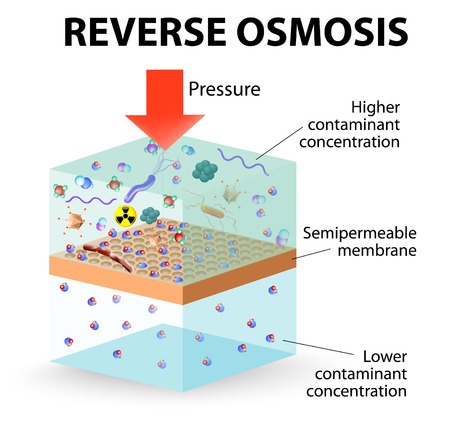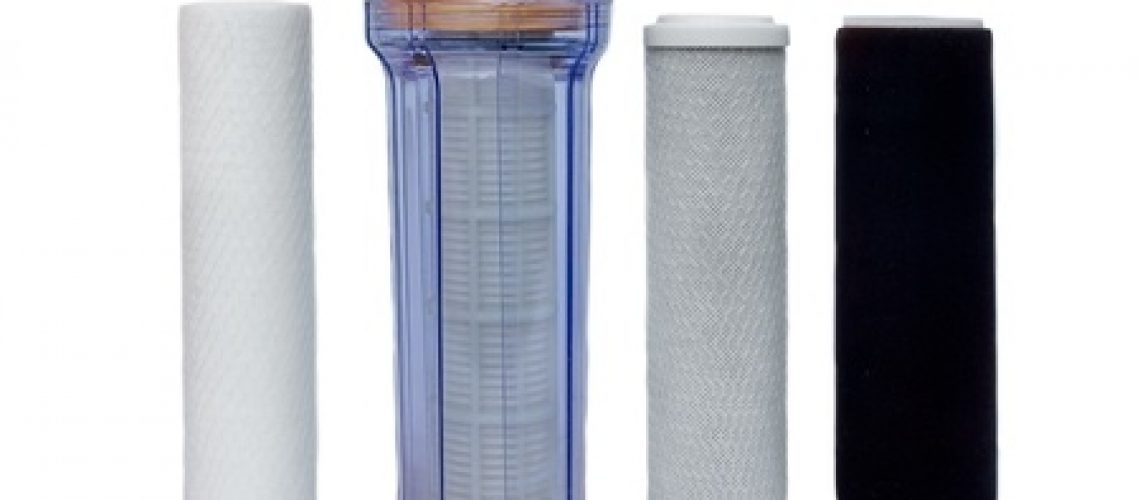Once you’ve learned a little bit about the different types of water that can be coming into your home, you may still be surprised to learn that these various water types can have dramatically different effects on your appliances. While some of the effects may seem scary at first, don’t worry! We’re here to help you understand the impacts of the different water and help you find solutions to minimize any negative outcomes.
Hard Water. Since hard water is made up of many minerals and elements that like to build up, the calcium, magnesium, and other minerals that are contained in this type of water can easily cause your home appliances difficulty or even long-term damage. Basically, these elements become such good friends with each other in your pipes and inside the appliances themselves that they just don’t want to separate from each other. The longer that these minerals hang out inside your appliances untreated, the bigger their family reunion gets. And the bigger the family reunion gets, the more havoc is sure to be wreaked on your expensive home devices.Because the elements found in hard water are part of a very tightly-knit family, each time you use your dishwasher, washing machine, refrigerator, or anything else that utilizes water to function, a new layer of the minerals is deposited on top of the prior layer(s). Eventually, these layers become so pronounced that your appliances can start suffering debilitating illnesses. If the build-up is in the pipes, corrosion becomes a likely result, if left unnoticed for an extended period of time.
If you have hard water, you’re not alone. The Water Quality Association estimates that around 85% of the United States has hard water. What does this mean for you? Well, fortunately, it means that many others have come before you, so options have been created in the industry, depending on your needs, budget, and other factors. There are a few main types of water softeners: ion-exchange, salt-free, reverse osmosis. Ion-exchange softeners are the most common household units. The ion-exchange units use varying types of salt (sodium, potassium, or hydrogen). In short, the negative ions that are contained in the hard water such as those contained in magnesium and calcium undergo a process whereby they’re drawn out of the water in exchange for the sodium, potassium, or hydrogen ions that are found within the salt that is used in the softening unit. In addition to the different types of ion-exchange softeners, there are different types of regeneration that these softeners can use. Again, depending on your specific situation and home use, you have the option of metered regeneration, regeneration using a timer, or manual regeneration. Sound overwhelming? Don’t worry! Understanding this stuff is what the professionals are there for!

Salt-free technologies are still relatively young in the industry. Although one form of salt-free technology, the magnetic softener, has been around for quite a while, it seems that experts are still on either side of the fence regarding whether or not this type of unit actually produces tangible results. One things that does seem to be agreed upon is that magnetic softeners aren’t actually softening anything (as in, they’re not really removing the ions and minerals that cause hard water to be hard). Rather, the process involves a rearrangement of the molecules that exist in the hard water to prevent the scaling that would otherwise occur as a result of the calcium and magnesium. The magnetic units may also use anti-scaling chemicals during the process, depending on the design, so that’s something to keep in mind when you’re shopping around.
Another salt-free form is the catalytic water softener. This one is still definitely new and in the development and testing phases, but it seems that one element cannot be present in the hard water in order for any positive affects to be seen: iron. It is likely that if any iron is present in the water being used with a catalytic device, no positive outcome can be achieved with the process.
The process of reverse osmosis involves the installation of a water purification and filtration system within your home. Although it seems very complicated at first thought, the entire system is pretty easy to understand with a few visual aids. The long and short of this process takes incoming tap water through the filtration system and removes the impurities and unwanted elements from the liquid. The water then finds its way through a filtering membrane, then goes on to your faucets and home appliances. The reverse osmosis systems tend to rank very high in terms of the purity of the final product, and they’re said to be very easy on a person’s monthly energy bill.
Soft Water. If the process of softening your water sounds like a pricey investment, consider the cost of replacing your expensive appliances every few years. If you’re regularly using hard water with all of your daily use, you’re likely putting your big ticket items at a big ticket risk. Soft water actually contains minerals that can be useful in your soil, on your lawn, and in your garden. That said, you may benefit (both monetarily and otherwise), but hooking your water softener up only to the hot water in your home. In doing so, you will have less worry over the harmful mineral buildup in your dishwasher, washing machine, and other appliances, but you’ll still have cold water available for garden uses, washing the car, and other tasks that don’t completely necessitate hot water.
Other Water. You may be surprised to learn that there are tons of other types of water out there. As we discussed earlier, if you’re looking for a way to keep those little guys in your home working properly and avoid the risks that come with impurities in water, you may want to consider distilled water for your iron, coffee maker, and other small household appliances. While not likely found as the type of water naturally running through your household plumbing lines, there are other options available to keep your appliances, particularly the smaller ones, running in tip-top shape. Natural mineral water and spring water are generally much purer than regular tap water (be it hard or soft) and are available for purchase. If you need to make sure that you don’t get those nasty rust rings on your nice work clothes when you’re doing the ironing, it’s a good idea to consider one of these types of water that’s available for purchase to maintain as much of the life of these small appliances as possible.
Although the different types of water and their effects on your appliances can seem completely overwhelming, the important thing for you, as a consumer, to know is just the general overview. Be sure to find a great professional that’s happy to help you with the details, and you’ll be in good shape and on your way to happier appliances!

